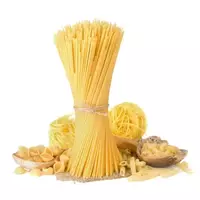Italian pasta

Pasta for Italians is not just a favorite national dish or treat for all time. Italian pasta is an old philosophy and way of life of an entire state. The story of Italian pasta began from time immemorial. Some researchers suggest that the famous traveler Marco Polo invented and prepared the pasta first. However, there is evidence that pasta similar to pasta has penetrated the European culinary tradition thanks to the ancient traditions of the Eastern peoples.
It is believed that the pasta, as well as most culinary masterpieces, was discovered spontaneously. People started cultivating cereal crops thousands of years ago. It was in those days that ancient dishes from processed grains of wheat, barley, buckwheat, as well as oats, rye and other agricultural cereal crops began to appear for the first time. It is also noteworthy that a dish that looked something like Italian pasta existed in the ancient Greek culinary tradition and was called laganon.
Pasta is primarily a special type of dough from which various pasta products are made. Over the centuries-old history of pasta, the world culinary tradition has been replenished with not a single hundred recipes, as well as various types of pasta. Dough for Italian paste is made only from high-quality wheat flour. In addition, paste dough is kneaded exclusively on mineral water.
Each region of Italy has its own traditions, as well as rules for making pasta. For example, in the north of the country, eggs are added to the paste dough. In southern Italy, pasta is more popular, with dyes of natural origin added to its composition. As a rule, spinach, curcumin, cuttlefish ink and, of course, tomatoes adored by all Italians. In Italy, there are over 350 types of pasta. Usually, the paste is characterized by the composition of the initial ingredients, from which pasta dough is subsequently made. In addition, all types of Italian pasta vary in shape and size.
Types of Italian paste
Among the most common types of Italian pasta are the following:
dry paste or Pasta secca, which is made from hard wheat;
long pasta or Lunga;
short pasta or Corta;
raw pasta or Pasta fresca is remarkably similar to Russian homemade egg noodles;
special hollow pasta, which is filled with meat, vegetable, fish or cheese fillings.
Not only the taste and consumer characteristics, as well as the calorie level of the paste, depend on the type of pasta. The average calorie content of the paste is 350 Kcal, which are contained in 100 grams of pasta. However, it is worth noting that Italian pastes are always served at the table with various sauces and other ingredients. The calorie content of the paste, cooked like dishes, will be strikingly different from the average. In addition to the main types of pasta, there are a huge number of varieties of Italian pasta.
Among the most popular and widely used in Italian cuisine are the following varieties of pasta - spaghetti, fettuccini, vermicelli, lasagna, capellini, as well as linguini. In addition, fusilli paste, cavatappi, rotini, ditali, pacqueri, radiators, penne and pasta, i. e. a product in the form of horns, are isolated. Pasta has always been considered one of the most common foods in our latitudes. It is the love of pasta that makes two people and two great cultures - Italian and Russian - related to some extent.
Italian paste 350 kCal
Energy value of Italian paste (Ratio of proteins, fats, carbohydrates - ju):
Proteins: 12 g (~ 48 kCal)
Fats: 1.2 g (~ 11 kCal)
Carbohydrates: 71g (~ 284kCal)
Energy ratio (bj | y): 14% | 3% | 81%
 Español
Español Français
Français Português
Português Русский
Русский 简体中文
简体中文 繁體中文
繁體中文 日本語
日本語 한국어
한국어 العربية
العربية Türkçe
Türkçe Қазақ
Қазақ Deutsch
Deutsch Italiano
Italiano Українська
Українська
